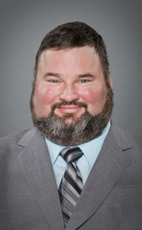Mr. Speaker, I speak today in support of Motion No. 172 as the House has accepted the amendments just moved by the member for South Surrey—White Rock—Cloverdale.
I would like to say how moving the words were from my colleague who just spoke. Talking about his son, and the joy and happiness his son has given him, his family and the people who know Jaden speaks to why we have all worked together in the House to bring forward this amended motion.
Motion No. 172 will pave a path to a better understanding of autism spectrum disorder or ASD. I want to begin by saying to all Canadians with ASD, their families and so many tireless activists, that this motion is far from marking an end point. I say this because initiatives in this motion call for a will to bolster Canadian research capabilities and, therefore, our overall knowledge of ASD.
For far too long Canadians with ASD and their families have been trapped in the dark. Today there is still so much we do not know. With knowledge, however, comes light. With greater knowledge, the more informed and effective future actions will be from the government, provinces, territories and stakeholders. In turn, more help will be provided to Canadians with ASD and their families.
I have worked in cooperation with the members for Fredericton and Sackville—Eastern Shore. We have taken action that crosses party lines for the good of thousands of Canadians and I am asking my fellow members to support this motion for the same reason.
Above all, this amended motion, if accepted, calls on the federal government to do what it can within its jurisdiction to lay the foundation of hope for all Canadians affected by ASD. It commits the federal government to launch a consultation on implementing a national surveillance program and calls on the government to provide additional support for research and to develop evidence based standards for diagnosing ASD. Finally, it recommends that the government work with the provinces to develop innovative funding methods to help Canadians care for their loved ones who have ASD.
This motion is consistent with the action and leadership that the health minister announced just last week. It includes a research chair that will focus on effective treatment and intervention for autism, a national symposium on autism that will be held in the spring of 2007, and a program on ASD that will be conducted by the appropriate branch of government.
A web page on autism has now been added to the Health Canada website. This web page will facilitate access to public information related to ASD. Finally, the minister also indicated that the health policy branch of Health Canada will be responsible in the future for the coordination of policy and program activities at the health portfolio level.
It is safe to say that I am not alone in hearing about the challenges posed by ASD from individuals and their families in my riding. The challenges range all the way from financial to emotional and the collective toll is enormous.
Canadians with ASD and their families deserve action. The motion before the House gives members the chance to take action. In supporting this motion, members can raise their voices in favour of laying the foundation we need for informed, effective future action. By supporting this motion members can further fuel our research down a path which may lead to finding the causes of ASD.
In conclusion, I want to add that this motion derives directly from parliamentarians successfully setting aside partisanship to help those in greatest need.
It is issues like this which attracted me to politics in the first place. I never planned to be a politician. I wanted to be an engineer like my father, grandfather and great-grandfather, and I actually became one. I worked in gold mines, but after my accident, a collision with a moose, I realized that my career as an engineer would be impossible. I had to make different choices.
It was after my accident that I realized that in our society we have a contradiction. We can and do invest enormously in treating illnesses, injuries and conditions like ASD, but then we do not invest enough in pursuing the actual causes or trying to ensure that these same individuals can live meaningful and dignified lives.
Canadians expect that everyone should have the opportunity to live the Canadian dream. This is a point related to public health and public policy that I have raised whenever I can, and in fact, it is this contradiction that has brought me to public life in the first place.
On a day like today, when this House has an opportunity to increase support for research to learn more about the causes of ASD, where we can all put up our hands to lay the foundation for helping individuals and families in need, and when partisan politics are bowed to spur public policy with principle and purpose, it makes me proud to be a parliamentarian, and I think we are all proud today to be here.
This is the right decision. I would like to urge my fellow colleagues to support this motion before the House.
I understand there is an objection from one party because of the word “national” in the motion. This House should always put Canadians first, regardless of the province they may come from because we are here together. As Canadians, it is our role to work together for the common good. This motion is an example of how Canada works well, and I am proud to be a Canadian.

